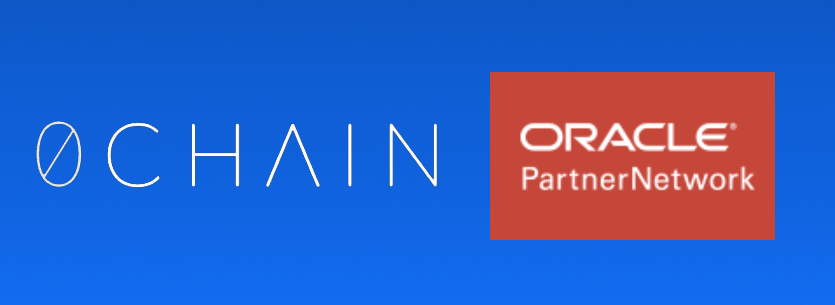
STO’s are expected to be the new ICO’s. But with every hype, you will also have to be careful that you are not being scammed by malicious projects and people who are trying to profit from gullible investors. In this short article I will give you some pointers in how to research a crypto project by researching its whitepaper. Apart from making sure that you invest in a solid project, whitepaper research could also help you avoiding scams.
What is a whitepaper?
So what is a Whitepaper exactly? When a company intends to launch a new crypto, they usually set out all the details in a Whitepaper. This file contains the technical, financial and commercial information about the project, such as an overview of the market, risks, and the use of invested funds. It normally sets out in plain language what they’re planning to build, to attract investors and other interested parties. In other words, the whitepaper explains the project’s purpose and process, the Why and the How.
Some projects do not start with bringing out a whitepaper. Loom network decided not to write a whitepaper, but immediately started developing and delivering code. Litecoin started out by giving a video presentation on ‘Creating Litecoin’ at a Coinbase event. And others are just forks of existing projects, like Bitcoin, so they don’t have their own whitepaper. Some projects bring out a Purple Paper, Green Paper or Yellow Paper or, such as Cardano, bring out multiple whitepapers to describe every part of the technology they’re developing. Luckily, almost every cryptocurrency and STO still release a whitepaper at some point in their roadmap, to outline their project and tech. So if you thinking about investing in a new token or STO and also want to avoid scams, your first stop is reading the whitepaper.
What to look for in a whitepaper?
Technology – The most important thing is the project’s proposed (technical) solution to a real problem, for a large enough relevant market. It makes no difference if it’s something new or a better application of existing tech, when the problem they’re trying to solve doesn’t need solving, there’s a big chance the project will fail or is set up to raise a quick buck. It shouldn’t be a ‘decentralized’ solution to a problem that has already been solved ‘centrally’, without the need for a blockchain or cryptocurrency.
Scam warning: Keep a look out for common buzzwords that are solely used to confuse u, without really explaining what the project is about.
Team – The people behind the project are essential for making it a success. Check out the team and their advisors thoroughly. What is their previous experience? What is their education? Are they involved in more projects? Ask questions if you are in doubt.
Scam warning: Scourge the internet and Linkedin for the team members and verify that they are the real deal. Don’t forget to Google their pictures, if any, to see if they’re legit and not copied from another project/website. There have been some rumors about a scam-project that copied the UI/UX imagepreviews from another company and the pictures of their alleged team members were actually some stolen pictures of middle school teachers in Australia. Also verify the project’s claimed partnerships, since some other scam-projects were suspected by the communities of advertising fake partnerships or photoshopping themselves in pictures with the board members of those ‘partners’.
Roadmap – Technical development always takes longer than promised, but a roadmap gives you an idea if they’re realistic about their goals. If the mainnet is set to be delivered in 1+ years, that might be a more risky investment considering the rapidly changing crypto environment and other (similar) projects popping up.
Scam warning: If the roadmap states that a mainnet will be delivered within a few months, that would be great, but could also indicate that they’re trying to make a quick buck (unless the started the development way before the STO of course).
Token allocation – Things to look at are the amount of tokens they are going to bring out. Will the tokens be locked up (vesting) for team members? Will they burn unsold tokens? Can they bring out extra tokens whenever they decide to do so? Or are they gradually releasing new tokens at set times? Is there an inflation rate? What is the consensus mechanism? These are all factors to take into consideration when you make an investment. Normally the best token allocation for investors is projects with a low token supply, so you get a bigger piece of the pie when you invest, but this strongly depends on the other factors.
Scam warning: this is a difficult factor, but it might give you an idea if they’re realistic about the project or just want to make a lot of money. If their total token supply and pricing results in a really high market cap, you should be suspicious about their intentions.
SEC-compliance – The SEC is going to release a guidance on security token analysis. This enables security tokens to be structured in accordance with securities regulations, so that token holders’ rights can be similar to those who buy shares in a publicly traded company. You can check with the team if there’s been a SEC-filing and read the SEC’s rules to confirm the STO is going in the right direction.
The rest – Many other things in a whitepaper could be a dealbreaker for smart investors. What are the short and long term goals of the token holders? What role do the tokens play in the project? Can you use the tokens for a certain product, or are they more like shares in a company? Are there many large private sale investors with influence on the team or are the tokens distributed to many smaller investors? What is their marketing strategy?
Scam warning: There are so many things that could be red flags. Make sure to verify any info on their websites and social media, does it look real or are they just using empty words, fake testimonials and social media bots. Are there no dubious statements? For example, IOTA (which was not a scam at all) allegedly claimed a Microsoft partnership, which actually was just an Office 365 subscription. Be aware of claims that their product can be used in any store or with every bank. Watch out for Ponzi Schemes like Bitconnect, with promised returns on investment for holding their tokens. Sometimes they bloat with big whales who have invested already. Always check out the contribution address and try to trace back those big whales, to make sure it’s not the team contributing to itself faking that they already have landed investors.
Conclusion
In the end, you must feel some form of excitement after reading the whitepaper. You have to have faith in the Why & How of the project and the team. You want to leave your money into the hands of a trustworthy project with a clear road ahead. A lot of projects that turned out to be a scam had a legit whitepaper at first sight. But after looking closer into the promises they make in the document, how they’re going to build it and with whom they plan to make it a success, it should’ve been possible for investors to pick out the red flags. Of course there are many other factors that could lead to the conclusion that the project is not a solid investment, but researching the whitepaper is one of the most accessible ways for you to verify it yourself.
Fortunately, www.allcryptowhitepapers.com has the largest whitepaper database in the world. With 2600+ projects in our database, it’s the best place to start your research. Also don’t forget to check out the Whitepaper of the Week and News section, so you don’t miss out on anything. Knowledge is power!
Article by John van Rijck from www.allcryptowhitepapers.com
Header image by https://photos.icons8.com/









